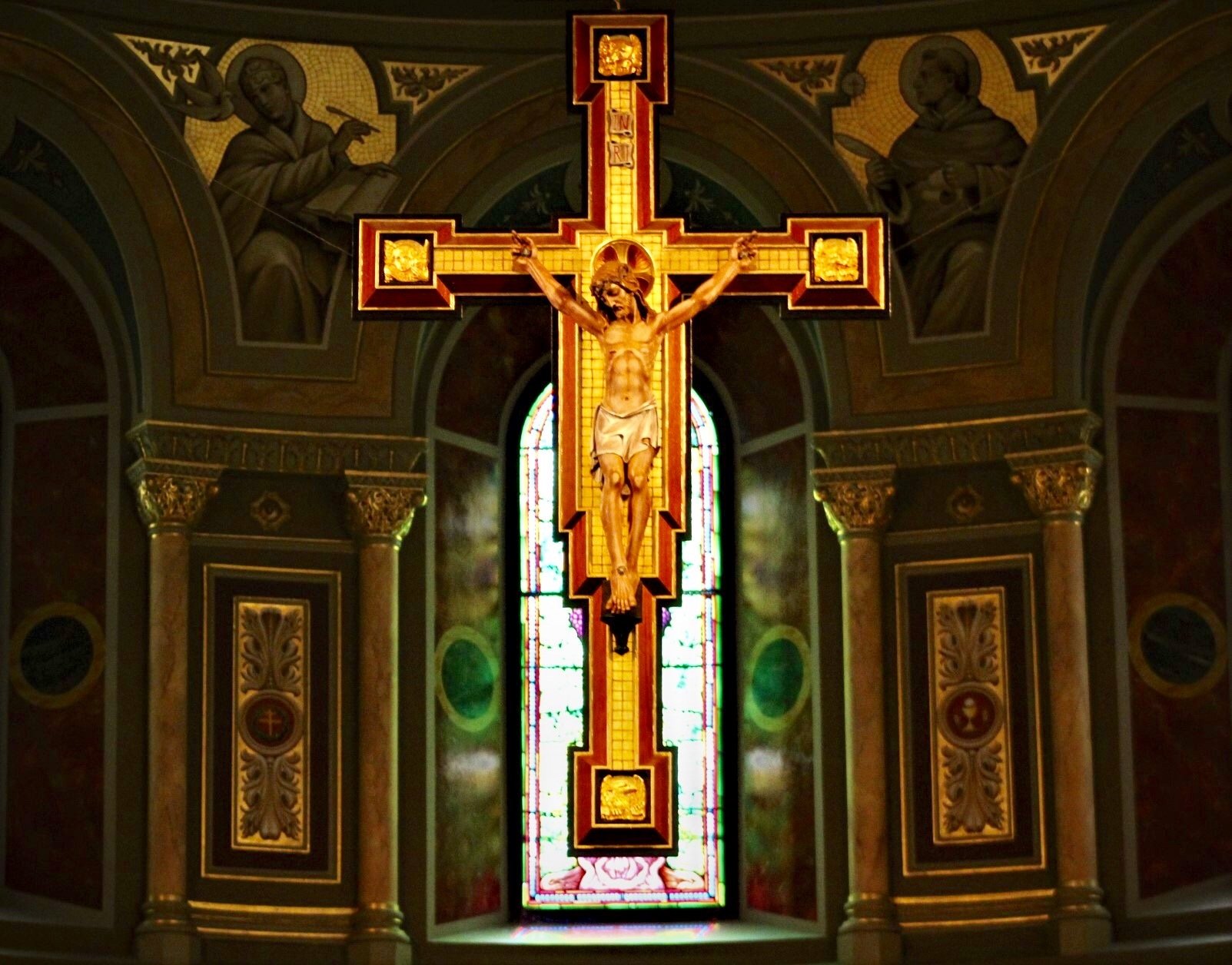Saint Helena, mother of the emperor Constantine, is credited with finding the True Cross empurpled with our Savior’s Blood. This discovery of the Holy Cross was her greatest find for, as Pope Leo observed in recent days, “here is the hidden treasure to sell everything for. The Cross of Jesus is the greatest discovery of life” (9/6/25). This is because it is the key to life itself. Life’s full meaning is found only in Christ who died yet lives. The Cross is the Tree of Life.
To celebrate the finding of the Cross, Constantine built the Church of the Holy Sepulchre, dedicated on September 13th A.D. 335. The next day, the True Cross was lifted-up to be honored by the faithful. Thus began the Exaltation of the Holy Cross on September 14.
It goes back much further, of course. Jesus indicated that His lifting up on the Cross was already signified by the lifting-up of the serpent in the wilderness so that all who looked on it would live. The cause of death would become the means of life: “So must the Son of Man be lifted-up, so that everyone who believes in Him may have eternal life.”
Dr. Peter Kreeft offers a striking, personal example of this in his recent autobiography From Calvinist to Catholic. There, he explains the need he experienced to look upon the Body of Christ Crucified. He recalls:
I felt the strong need of something outside myself that I could see or touch to get me out of myself and to mediate and symbolize and sacramentalize the God to Whom I wanted to give my whole self in love and adoration . . . I addressed all my faith, hope, and love to the One who hung on that Cross for me. I could not do without that physical icon. I could not throw my subjective self away out into what seemed . . . emptiness. The hand that received mine had to be as physically real as my own (p. 65).
Avoidance of Christ Crucified is avoidance of the full revelation of God’s love. He takes our sufferings so seriously and personally as to take them on Himself. To avoid the Cross is to miss out on the new life in Christ God desires for us as He thirsts for our love. Dr. Kreeft writes of the need for this “incarnate physicality that is so typical of Catholic worship.” He asks: “how can we try to be more spiritual than God, who gave us not just His Spirit but also His Body for our salvation?” (p. 65).
This is what we see in the Crucifix, and it’s why the Church insists that “on or close to” the eucharistic altar there should be a cross “with the figure of Christ Crucified upon it” (GIRM §308). In looking at Christ Crucified, I learn that the hand of Divine-Love reaches out to take my hand and be my life, if only I would trust Him. The hand of God in human flesh lifts me up.
Contemplating Christ Crucified is transformative. To have a beautiful crucifix in your home or room is a powerful witness, a sign of hope, an expression of divine love, and a means of protection and blessing. Fr. Donald Haggerty writes that “The sight of Jesus Christ Crucified gazing down on us . . . is sufficient to change us forever” (Conversion, 23). The loving gaze of Christ Crucified draws us to Him and invites more from us. We are asked to live heroically for Him. Nothing less than the gift of ourselves back to Him will ever satisfy us . . . or Him . . . as He pursues us in love.

God doesn’t save us from death. He saves us through death—through the death of His Son for us on the Cross. This is why we “glory in the Cross of Our Lord Jesus Christ” (Gal 6:14). In this mystery, we are emptied out and lifted-up in Him: we die and rise with Jesus.
Today is the Lifting-up of the Cross, but sometimes, like Saint Helena, we have to descend, to go down, and to dig deeply. Recently, Pope Leo praised Helena because she did just that. She sought and discovered the True Cross. She excavated for it and dug for it as for the pearl of great price.
This digging for the Cross can be seen as a cultivation of the heart. Pope Leo observes that, “Cultivating the heart takes effort. It’s the biggest job. But by digging we find; by lowering ourselves we get closer and closer to that Lord who emptied Himself to become like us. His Cross is under the crust of our earth.”
When we lower ourselves with Christ who already takes the lowest place “unto death, even death on a Cross,” then we are raised up in Jesus with lives made new. We share the exaltation of the Cross. In the light of Christ’s Cross, we see the true value of everything else. The Glorious Cross of Jesus is “the hidden treasure to sell everything for.” It is “the greatest discovery of life” (Pope Leo).

